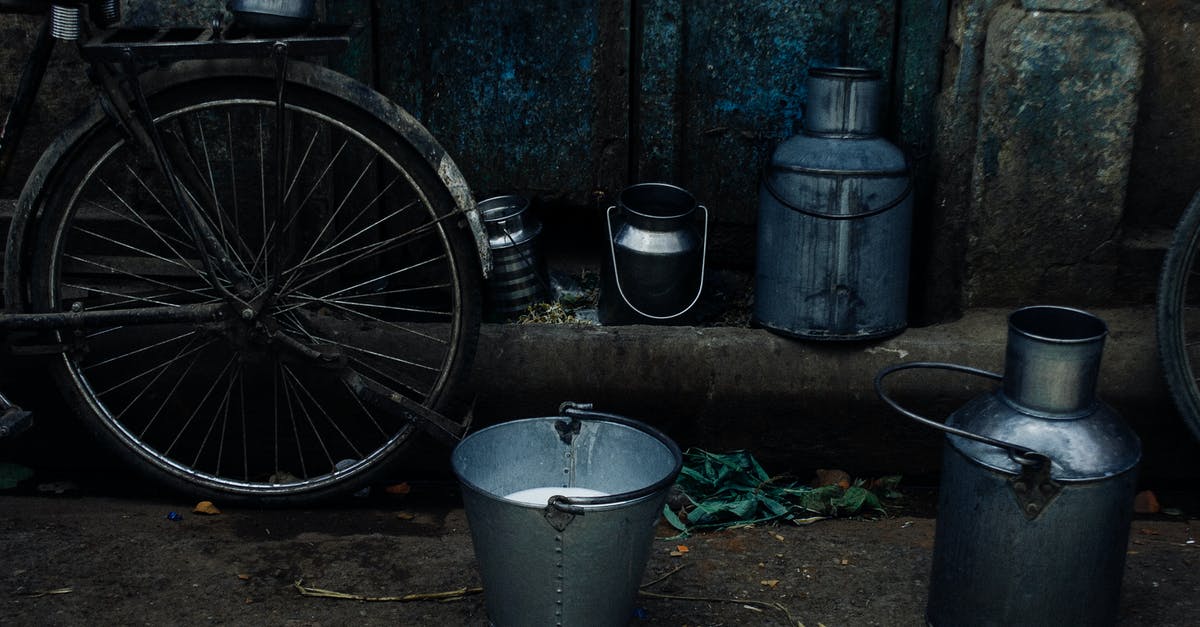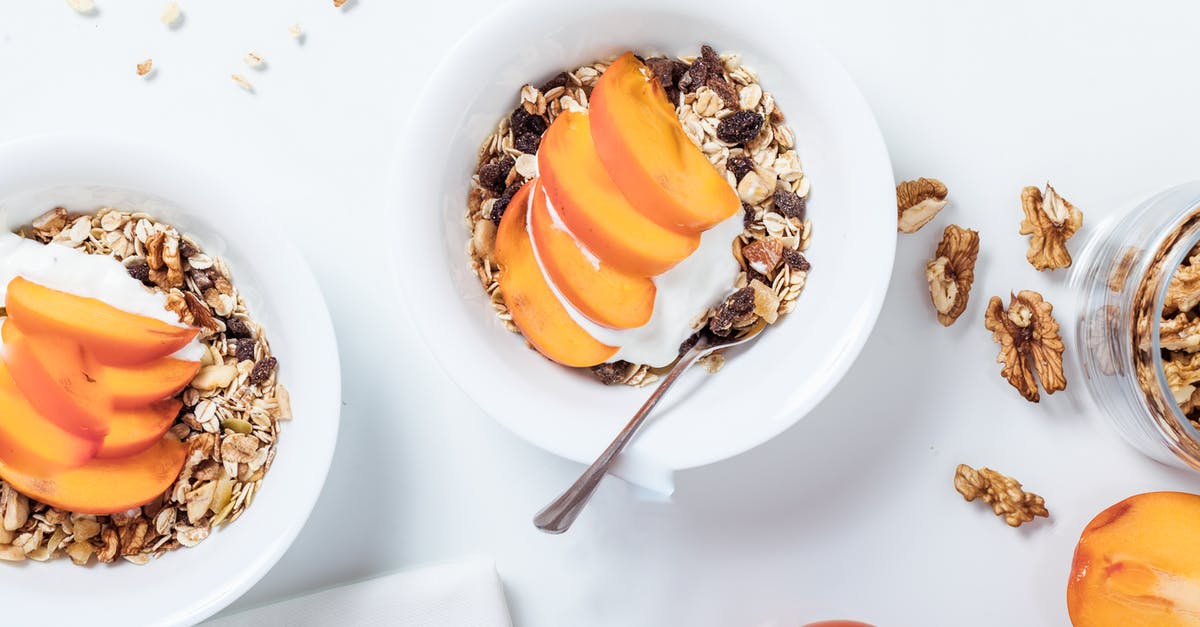Can soured raw milk be used to make yogurt?

I have a large quantity of raw milk at my disposal, and am trying to find creative ways to use it.
Various web sites (here, here, and many others) have suggested that raw milk, even (perhaps even especially) after it begins to sour, can be used to make yogurt.
I've also heard the claim that sour milk is too acidic for yogurt cultures to grow.
Which is it?
Please note this question is specifically about soured raw milk, not spoiled milk, which is not edible. And please assume that the sour raw milk being used is free from harmful bacteria and pathogens and is safe to consume. I'm not asking about food safety here, I'm asking: Is it possible to make yogurt from sour raw milk?
Best Answer
Based on your edit to your question, and with some additional thought, I'm going to answer this differently.
Soured milk differs from what you called "spoiled" milk in only one way- what wild bacteria reproduced faster: bacteria with tasty waste products or bacteria with disgusting waste products. With that in mind the major potential problems with using this milk to make yogurt are:
- If the wild bacteria crowd out the yogurt culture
- If the yogurt culture is not able to work because the milk is too sour.
In making homemade yogurt neither of these should be a problem.
In making all yogurt- including yogurt made from raw milk in commercial settings- the milk is heated to 190F for some time to denature albumin proteins and to partially sterilize the milk so that the yogurt cultures will have the upper hand. This means that all yogurt has been pasteurized and the fact that the milk was purchased raw is a red herring. This will make problem #1 above unlikely. Not heating the milk will leave you with @rumtscho's answer- you can only guess what you might get by incubating it.
As for problem #2. Milk proteins begin to coagulate at a Ph of about 4.6. The target Ph for yogurt is usually 4.5. When making yogurt, Streptococcus thermophilus brings the milk down to about 5.0 and Lactobacillus Acidophilus takes over and brings it down to 4.5. Lactobacillus Acidophilus is active well below this Ph. Therefore, if your milk is not already thickened then it is, by definition, not too acidic for the yogurt culture to work.
Unfortunately, as the commenter from your first link indicated, heat combined with acid will cause the milk to prematurely denature. If you milk is too sour already then heating it to 190F may cause the protein to precipitate out and you would have paneer (sort of). I looked but was unable to find at what Ph milk proteins will denature at 190F.
http://www.foodsci.uoguelph.ca/dairyedu/yogurt.html
http://food.oregonstate.edu/learn/milk.html
If you can strictly verify the handling of your raw milk to have confidence that it has not been contaminated with harmful bacteria, and if the milk has only slightly soured so that it can be heated without breaking, you should be able to successfully make yogurt out of it knowing that the texture might vary from that of your starter.
Pictures about "Can soured raw milk be used to make yogurt?"



What can you do with spoiled raw milk?
20 Ways to Use Sour (Raw) Milk- Make chocolate cake- use the clabber in place of the milk or buttermilk in the recipe.
- Make zucchini bread or banana bread.
- Add it to yeast breads or rolls.
- Make delicious homemade waffles or pancakes.
- Make muffins for breakfast or snacks. ...
- Use it as a base for your smoothies.
Can you use milk that has turned sour?
If the milk does not have any off-putting smell or taste, you can still use it. If milk has gone a little sour, it is still safe for consumption. However, you need to ask yourself whether you find it appetizing enough to use it.Can I use raw milk to make yogurt?
You can make yogurt out of regular store-bought pasteurized milk, organic milk, raw milk or even goat's or sheep's milk. Pasteurized milk, the kind you find at the grocery store, is basically milk that has been heated up to 180 F in order to slow the growth of bacteria in milk, which lengthens its shelf life.What can you do with milk that has soured?
Sour milk is a good replacement for buttermilk, yogurt, or sour cream. Some recipes even call for \u201csoured milk,\u201d which requires you to add a spoonful of vinegar to milk. Make pancakes, waffles, biscuits, or a fruit-bottomed upside-down cake.How to Make Raw Milk Yogurt without Heating | GAPS DIET RECIPES STAGE 1 | Bumblebee Apothecary
More answers regarding can soured raw milk be used to make yogurt?
Answer 2
Since you edited your question, I would like to expand my answer.
What you plan is to let raw milk go sour, then add a yogurt culture. You ask what will happen. The answer is: it depends on whatever bacteria were in the raw milk in the first place. And you have no control over that. Here are all the possible outcomes if you start with milk not contaminated with any harmful pathogens:
- The milk its on its way to become a tasty and harmless yogurt even before you culture it. This will happen if the initial bacteria were harmless yogurt-producing lactobacilii, and they dominated all other bacteria species in the milk.
- The milk is on its way to become something tasty and harmless, but different from yogurt, before you culture it (for example the cottage cheese you mentioned). You add the culture, the yogurt bacteria dominate the non-yogurt bacteria, and you end up with yogurt.
- The milk is on its way to become something tasty and harmless, but different from yogurt, before you culture it (for example the cottage cheese you mentioned). You add the culture, the non-yogurt bacteria dominate the yogurt bacteria, and you end up with something different from yogurt.
- The milk is on its way to become something yucky and harmless (because it happens to contain the wrong lactobacilii). You add the culture, the yogurt bacteria dominate the non-yogurt bacteria, and you end up with tasty yogurt.
- The milk is on its way to become something yucky and harmless (because it happens to contain the wrong lactobacilii). You add the culture, the yucky bacteria win, and you end up with something yucky which is not yogurt.
I doubt that 4 can ever happen, because once you have produced the bad taste, it stays there even after the bacteria responsible for it die out. Your position that raw milk goes sour, while pasteurized milk goes bad can be then understood as stating that case 5 only happens with pasteurized milk, and raw milk will produce result 2 or 3, and you are asking us if 2 or 3 will happen.
Even if we assume that 5 really can't happen with raw milk, you still can't predict whether 1, 2 or 3 will happen before you have the end result. It depends on which kind of bacteria will invade your milk, which kind of yogurt-making culture you will add (there are lots of them), and what conditions you will keep the milk in before and after the culturing. If you try it, you are practically gambling. You can end up with yogurt, with cottage cheese, with kefir, or with some strange, inedible combination of all of these. That said, I suspect that 1 will be much rarer than 2 or 3, just because the subset of lactobacilii which produce yogurt is somewhat small. It still can happen - it happened in my own kitchen with pasteurized milk forgotten on the counter for a weekend. When I came back, it had the texture, viscosity and smell of yogurt, not cottage cheese or something else. (I didn't taste it, so there is a small probability that it was case 5 after all).
You can try to make your chances for getting yogurt higher by choosing a more aggressive and rapid growing yogurt culture, and using big amounts of yogurt culture as starter. This will make it easier for the yogurt culture to overwhelm the other culture, because it will grow at an extremely high rate. As a downside, the rapid fermentation process will result in a sour, pungent yogurt with a high ratio of acetic acid and quite probably some ammonia.
The reason why Sobachatina and I reacted so strongly against your idea is that there are five other possible outcomes. For each of the five cases above, if you start with a milk which is contaminated with a pathogen, you end up with the same result but it is no longer harmless, it is very dangerous - let's call them cases 1b through 5b. And there is an ugly detail: Milk (or yogurt, or cottage cheese) which is contaminated with something nasty does not taste, look or smell different. So, whatever you end up with, you have no way to tell (short of a lab test) if you ended up with 3a (what you wanted) or 3b (a yogurt which will make you sick). The fact that you bought raw milk from (presumably) a well-handled, healthy animal does not make the risk of contamination low enough. And while you can find reputable sources which will tell you that raw milk doesn't "go bad", what they mean is that case 5 doesn't happen with raw milk, not that raw milk is never contaminated with pathogens.
I have no means to stop you from conducting your experiment, but my advice for you and anybody else who might read this question is to not do it. As evidence for this opinion, I will leave my old answer below. It is based on peer-reviewed articles and government-approved guidelines, not hearsay or unattributed web sites. For anybody still unconvinced, I recommend reading the articles themselves.
You don't need people with "experience" of raw milk. In food safety, experience doesn't help any; counting pathogens does.
Common sense alone should be enough to notice that spontaneously fermenting raw milk can't be a good idea. Look at how hard it is to obtain raw milk - wherever this is possible at all, it is very tightly regulated. The reason is that cow stalls are dirty places, and milk is a perfect growth medium. If it was safe to leave raw milk around and eat it after it has fermented, nobody would create such tight regulations to prevent this from happening. Making yogurt is a special case - if you have a big colony of harmless bacteria, they can outcompete pathogens quickly enough (but still it is preferable to make yogurt with pasteurized milk, just in case). To give you an example: in Germany, raw milk can be sold up to 24 hours after milking, and has an expiry date of 96 hours after milking (and has to be kept under 4°C in the meantime). The raw milk must be labeled as such, there is a warning that it should be cooked before consummation, at-risk populations (pregnant, elderly, infants) shouldn't have it even cooked, and it is forbidden to use raw milk in commercial kitchens.
But as I said, you shouldn't rely on common sense where it comes to food safety. So here the hard data. I went to pubmed and searched for "bacteria in raw milk". This is a complete list of the bacteria mentioned on the first page of the results:
- Coxiella burnetii (bonus: Wikipedia says this is "the most infectious organism known to man")
- Lactococcus lactis
- Campylobacter
- Escherichia coli
- Staphylococcus aureus
- Lactobacillus zeae
- Sphingobacterium lactis
- spores of Bacillus anthracis (that's just what it sounds like: anthrax)
- Salmonella
- Listeria
- Brucella (a Wikipedia citation: Brucellosis... is a highly contagious zoonosis caused by ingestion of unsterilized milk)
- Mycobacterium avium subsp. paratuberculosis
Out of these, the Lactococcus and Lactobacillus won't make you sick. All the others are dangerous pathogens. And I don't want to go through the article you linked sentence for sentence, but in case you believe them that pathogen infections only appear in industrialized dairies (oh, and I can tell you that my grandfather is a vet specializing in livestock - the cows in big dairy farms are not constantly sick as your link claims), some of these studies were made with normal village cows in India, Zimbabwe and other places where cows are raised the same way as centuries ago.
As for the "different bacteria" point: Theoretically, the same bacteria can live in both raw and pasteurized milk. In practice, in today's industry there is practically no way that milk can get contaminated with the nastier stuff between pasteurization and you opening the carton. After opening, we hope that nothing in your kitchen can contaminate the milk with brucellas or salmonellas. Before pasteurization, any contamination can occur. So yes, the microflora of pasteurized and non-pasteurized milk is different, but it is by no means a case of "natural is better".
Conclusion: Raw milk is a good thing by itself, but it can harbor some terrible illnesses. If you want to use it, you have to be much more careful than with pasteurized milk. Letting it ferment by itself is reckless. Refrigerate it and throw it out 96 hours after milking - even a whole cistern of milk isn't worth a salmonella or listeria infection.
Answer 3
I home produced raw goat milk for 20 years and made yogurt, cheese and it was our sole source of dairy. I ran a healthy herd, good udder cleansing pre and post milking, strained my milk and chilled to high grade B standards. I would never use soured milk for fermentation like yogurt or cheese. While I never did it I believe it would negitively affect taste and I would be concerned about bacteria. I would some years put a small sample of milk in a half pint mason jar, date it and leave in the outside frig. The longest I ever left was 14 months, the length I milked that particular goat. It was chunky curds and yellow whey with a sour smell, there was no sign of bacteria. I routinely used lightly soured milk in all my baking its makes wonderful lightness and depth of flavor. Contaminated raw milk can grow some very interesting bacteria and I had few mason jars ever show any but believe me the floating colonies were unmistakable!
Answer 4
The answers here are kind of frustrating. The sour milk is not bad. But let's start with a history lesson.
Before pasteurization, raw milk was, obviously, the only option available. And without a refrigerator, this was a far more perishable product that we're used to today. In this sort of context, it simply does not make sense to discard everything you can't drink while it's still fresh--you need to come up with ways to deal with milk that's turned. Possibly the simplest approach here is a product called "clabber" or "clabbered milk": leave raw milk alone, and hope for spontaneous fermentation. This will yield a product that is slightly tangier than most commercially available yogurt, and has a far wider variety of probiotics (and likely in greater number) than what you can find in the store.
And it's fermentation that you're looking for: once the milk picks up the right bacteria (primarily lactobacillus), it will grow wonderfully, crowding out and eventually killing off all the other nasties, and thickening itself in the process. The point here to recognize is that this is a food preservation process: allowing the milk ferment will grow one kind of bacteria (the good guys) and kill another (the bad guys).
The main difference between clabber and yogurt is that the former is spontaneously fermented by wild bacteria in the air, whereas yogurt is a cultured product, meaning that some of a previous successful batch of yogurt is added to the milk to provide a starter colony of bacteria to jumpstart the fermentation process. Along the way, someone found that this would improve their success rate and consistency of product, and it became standard practice.
So, no, soured milk is not necessarily harmful. You could make yogurt out of soured raw milk. The only potential problem would be the taste would be more sour. Some people love that taste, and for others, it's acquired.
I have a gallon of raw milk that I did not get to and it has soured. I poured off some of the cream (another thing that is impossible to do with homogenized milk) and will use it in a beef stroganoff recipe for dinner. The milk still has some cream left, I was thinking about making yogurt actually, or trying ricotta cheese. If I make ricotta cheese (another curds from whey thing), I will save the whey for bread making or similar.
Sources: Stack Exchange - This article follows the attribution requirements of Stack Exchange and is licensed under CC BY-SA 3.0.
Images: Plato Terentev, Alexander Mils, Ena Marinkovic, Klaus Nielsen
